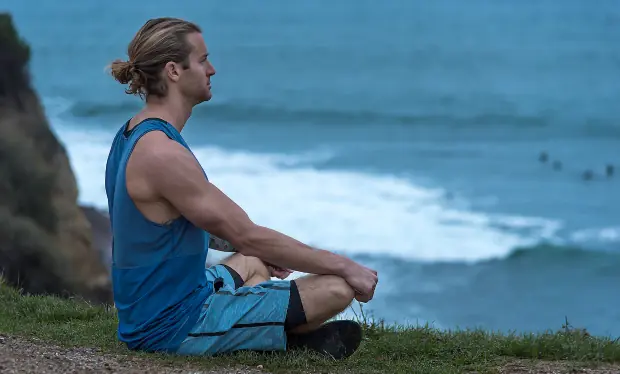
Not all triathlon swim legs are created equal. Some feature an out-and-back course, while others are multiple loops. While you may personally have your own set of preferences when it comes to the swim, sometimes the weather has other plans. If you're interested in a late season triathlon or an open water swim in the Pacific, cold water is a buzz kill among many recreational triathletes.
The dichotomy between thought and action is what keeps people away from gaining the confidence to swim in cold water. You can physically swim in cold water, but your brain conditions you to avoid extreme temperatures. To conquer this, your cold-water acclimation must be multi-faceted, equal parts mental and physical training.
MIND OVER MATTER
We can influence how we perceive temperature. To do so, you must shift the way you think of cold. Generally speaking, take the word "cold" out of your vocabulary moving forward. The winter season is an ideal time to begin exercising the mental power you have over your body.
Close your eyes and focus solely on your breath. Enjoy a long, smooth inhale, followed by a long, relaxed exhale (repeated several times). Take notice of how this begins to relax your mind and muscles, and even slows your heart rate.
Next, visualize something relating to heat or fire. Really surround yourself in its presence in your mind and feel the heat coming from your source. Think hot, hot, hot. You are getting warmer and creating internal heat that will allow you to withstand extreme temperatures.
This simple exercise should be repeated daily before taking the same practice outside. Be diligent, and over time you will master your perceived limitations on cold tolerance.
The next exercise will not only better prepare you for cold water immersion, but also save money on your gas bill. After you've finished your routine shower, gradually turn the knob colder and colder until it reaches the coldest temperature possible.
During the transition from hot to cold, go inside your mind again and practice creating your fire. Focus on your breath; it is all you need. Remember, think hot, hot, hot! The first few days of these cold showers may be a bit torturous, but the acclimation period is quick for most. The end goal would be taking only cold showers. When you get out of a cold shower in the morning, your day is primed! You've set the tone for a successful day with an ambitious start by getting out of your comfort zone.
To take the cold plunge to the next level, consider taking a full-body ice bath a few times a week. This is particularly effective in warm climates where the open water never gets very cold.
Start by filling the tub with cold water and inch your way into the tub while practicing your breathing exercise and visualization. Once this is comfortable for you, gradually add ice to lower the temperature. Keep a thermometer handy to make sure the water stays above 60 degrees.
The water will be around this temperature or warmer at most races. When finished, remain in room temperature, as opposed to the instinct of wanting a hot shower.
TAKE IT OUTSIDE
There is an incredibly simple and subtle exercise to adapt to cold, ambient air during your daily activities. Wear fewer layers! Dress as if it is 30 degrees warmer and let your mind tell your body what to think.
The next, inevitable step is actually getting in the open water. At this point, the lake or ocean will seem much less daunting after several sessions submersed in cold water. Begin by simply spending time in the water doing things you enjoy--snorkeling, surfing, diving, etc.--to create a positive association with the temperature differential.
It won't take long for you to gain the confidence to dive in and start logging some yardage with a friend. The more time you can spend in the open water, the better. Schedule a weekly open water swim, if proximity allows.
Even with earnest cold-water training, the initial shock of stepping into frigid water can send pins and needles through your body. To expedite these early, brief sensations, simply splash water on your face, hands and the areas of your skin that are most sensitive to temperature before you plunge all the way in.
Recognizing this sensitivity gives us the opportunity to address these areas first, preparing our body and mind for the particular conditions at hand. The quick, cool shock to your system will get you revved up and ready to warm up in the water, pre-race.
Consciously acclimating to the cold will allow you to perform to your best ability at your next race. Your mind will no longer be distracted with thoughts of what you cannot do, but rather energized with your ability to tap into the power your mind has over your body. You may be surprised by how much you enjoy taking on this challenge, adding a new dynamic to your multisport love.
Recent Articles:
Connect with us on Twitter, Facebook, Instagram or Pinterest for more tips, recipes and ideas to fuel your ACTIVE life.
 Put your mental strength to the test. Sign up for a triathlon.
Put your mental strength to the test. Sign up for a triathlon.


